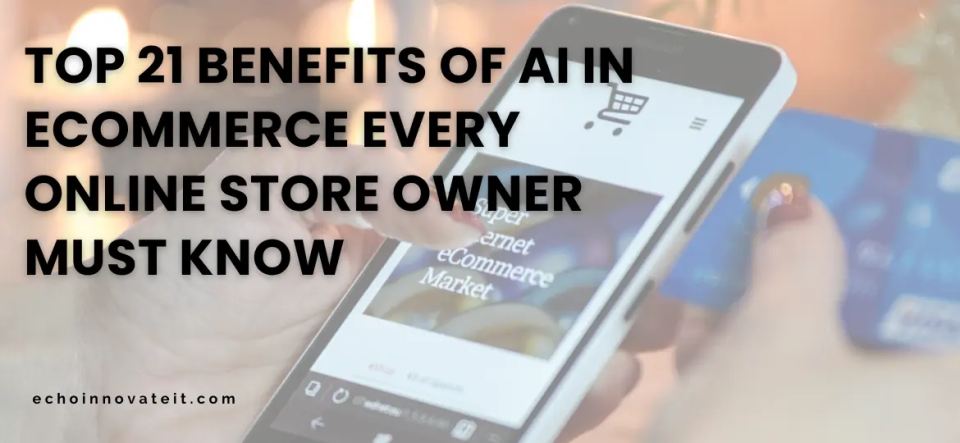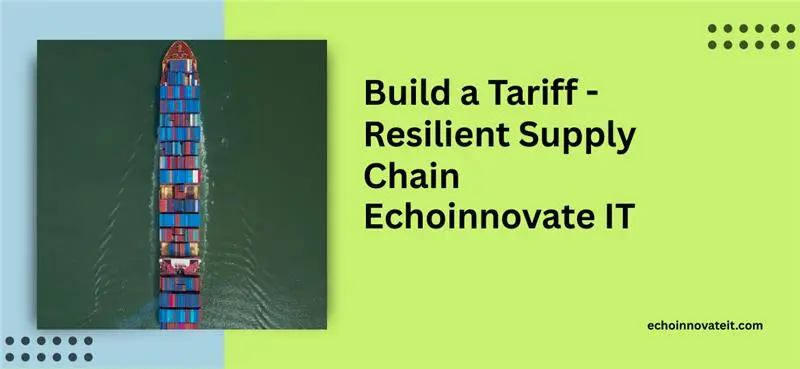Imagine a world in which every delivery arrives precisely on schedule, inventory levels are optimal and routes run as efficiently as possible – that is the reality being created by logistics technology today. Global logistics market revenues are estimated to surpass trillions within years thanks to advanced software solutions like digital transformation within supply chains – businesses have seen massive operational savings while improving customer experiences through adopting digital transformation in their supply chains.
Logistics apps are software applications designed to simplify and streamline various aspects of logistics and supply chain processes, from real-time tracking of goods and vehicles to route optimization that reduces travel time and fuel consumption, inventory control against stockouts or overstocks, and efficient inventory management. At their core, logistics apps serve several vital roles. Their primary functions can range from real-time vehicle tracking with GPS navigation for intelligent route planning and stockout and overstock alerts to efficient inventory management for higher efficiency across various aspects.
Custom logistics apps provide businesses navigating modern logistics with significant advantages beyond automation, from improved operational efficiencies and savings from optimized resource allocation to providing transparent tracking of deliveries that exceed customers’ expectations and reliable delivery service. Are you exploring logistics app development services for your business? This guide will walk you through it all, including logistics app development costs to help businesses. Together, we’ll embark on this adventure.
Understanding Your Logistics App Needs
Before diving into the technical logistics app development process, the most essential step should be gaining an in-depth understanding of its purpose and goals. This means defining who your target audience is, pinpointing specific pain points you hope to address with it, and outlining features that provide tangible value.
Determine Your Target Audience:
Who will use your logistics app primarily?
Deliberating over their unique needs and workflow is of the utmost importance. Consider these questions when answering these inquiries
- Are you targeting small businesses? Their needs could include simple tracking, basic route planning, and communication among their drivers – cost-effectiveness and ease of use will likely be their top considerations.
- Are you targeting large enterprises? Their needs could be more intricate, including complex warehouse management procedures, integration with existing enterprise resource planning (ERP) and customer relationship management (CRM) systems, and sophisticated analytics for large-scale optimization.
- Are you catering to a particular industry? Different industries present unique logistical hurdles; food delivery service would focus on real-time order updates and temperature tracking, while a freight forwarder might primarily offer multi-leg journeys and customs documentation services. Finding your niche will allow you to tailor features and functionalities precisely.
- Consider the different user roles within your target audience: Be mindful of all the user roles within your target audience when designing an app for them. Will the app be utilized by dispatchers, drivers, warehouse staff, customers, or administrators? Each persona may require individual consideration.
Outline the Core Issues Your App Will Solve:
What pain points does your app aim to alleviate within current logistics operations? Clearly outlining them will guide your feature development efforts and guarantee your app provides meaningful solutions, examples being;
- Poor route planning leads to delays and increased fuel costs.
- No real-time visibility into shipment location and status.
- Manual inventory control is prone to stockout errors and inadequate communication between dispatchers and drivers, resulting in subpar service levels for drivers and dispatchers alike.
- Difficulties tracking order fulfillment and delivery confirmations.
- Limited insight into operational performance and improvement opportunities.
- No automated notifications of critical events.
- Disparate systems which don’t communicate between themselves, resulting in data silos.
Determine Key Features and Functionality:
Once you understand who your target audience is and the problems your logistics app solves, outline its key features and functionality. Here are a few practical functionalities you should keep in mind for consideration:
- Route Optimization and Planning: Intelligent algorithms can analyze factors like traffic conditions, delivery windows, and vehicle capacity to plan out routes with minimum travel time and fuel use – including multi-stop routing capabilities that dynamically change their path throughout their travels.
- Inventory Management: Inventory management software offers businesses managing physical products an effective tool to track inventory levels across warehouses, monitor stock movements, and notify of low stock levels – helping prevent delays and ensure efficient order fulfillment.
- Order Management: Order Management facilitates efficient order creation, dispatching, tracking of order statuses, and managing delivery schedules. It can easily integrate with e-commerce platforms or other order entry systems.
- Driver Management and Communication: Features such as driver profiles, task assignments, in-app messaging, and proof-of-delivery (e-signatures/photo capture) facilitate effective coordination between dispatchers and drivers.
- Analytics and Reporting: Gaining visibility into key performance indicators (KPIs) such as delivery times, fuel efficiency, driver performance, and order volumes allows businesses to identify bottlenecks quickly, optimize operations efficiently, and make data-driven decisions more easily. Customizable dashboards and reports are highly valuable resources in this regard.
- Notifications and Alerts: Real-time notifications about key events like delivery confirmations, delays, vehicle breakdowns, or low inventory levels keep stakeholders up-to-date and allow timely intervention by management.
- Integrating Other Business Systems (e.g., ERP / CRM): Integrating seamlessly with existing business systems such as ERP (for resource planning) or CRM (customer relationship management) ensures data consistency by eliminating manual data entry processes, providing a holistic view of operations, and offering seamless API exchange of data.
4. Consider Scalability and Future Needs:
Be wary of immediate requirements only when designing for scale; your logistics Be wary of immediate requirements only when designing for scale; your logistics operations might expand over time, or your app might need to handle additional users, vehicles, or data in the future – designing for future scalability from the outset will save cost in re-architecting later on. Things you should keep in mind include:
- Flexible and robust backend infrastructure.
- Capability of quickly adding new features and functionalities.
- Support for rising data volumes and user traffic levels.
Steps To Develop A Logistics App

Launching into logistics app development requires taking an organized approach to be successful. Our logistics app development guide will walk through each essential stage and give clear direction throughout:
Choose the Right Development Approach
Your first critical decision must involve choosing an ideal development approach for your project. There are various development methodologies available such as native app development for iOS and Android platforms), cross-platform app development (using frameworks to develop apps that run on multiple platforms), hybrid app development (combining web technologies with native containers), etc.
Each has pros and cons regarding performance, cost, timeliness of development, etc. Each should be chosen based on budgetary restrictions, desired performance criteria for target audiences, and required logistics app development features to make an educated choice and decision about the development approach that best meets project objectives and timeline.
Select A Tech Stack
Your logistics app’s technology stack forms its backbone, including programming languages, frameworks, databases and tools that will be utilized both on its backend server-side logic management and its frontend user interface development. Common choices for backend server programming may include Node.js, Python, and Java alongside databases like PostgreSQL or MongoDB. At the same time, React Native Flutter or Swift/Kotlin may be suitable frontend development options based on performance scalability requirements and expertise requirements of native development, respectively.
Your technology stack selection has the potential to affect performance and scalability requirements as expertise requirements of the development of both elements simultaneously resulting in app performance as scalability requirements as expertise requirements of the app development process significantly impact the app’s performance scalability requirements when developing it as well.
Design and Prototype
Before diving into coding, design, and prototyping, play an invaluable role in visualizing logistics app features and creating user-friendly experiences for end users. This involves producing wireframes (basic structural layouts) and interactive prototypes (simulated functional simulations of an app’s features) to collect feedback on its user interface (UI) and user experience (UX) design, gathering user responses as feedback while refining these designs further to gather customer satisfaction while streamlining development thereby potentially saving both time and resources over time in time and resources in future efforts.
Develop the Backend and Frontend
With your design blueprint in hand, core development begins in earnest. Backend development encompasses building server logic, APIs (Application Programming Interfaces), database integration, and creating visual user interfaces. In contrast, frontend development implements design features across devices to bring logistics app development features to life through code.
Testing and Quality Assurance
Rigorous testing ensures any logistics app’s stability, functionality, and security. Testing techniques vary between unit testing (examining individual components), integration testing (observing how different parts function together), and user acceptance testing (allowing end-users to try the app themselves and provide feedback), as well as user acceptance testing by end users providing their feedback directly through your logistics app development timeline.
Thorough quality assurance helps identify bugs quickly while increasing performance and offering users a seamless user experience before launch – always allow enough time for rigorous quality assurance before your logistics app development timeline allows.
Deployment and Maintenance
Once an app has undergone thorough testing and been certified ready, its deployment phase involves publishing it to various app stores like Apple App Store or Google Play Store or for internal enterprise use. But deployment doesn’t end here: ongoing maintenance must address post-launch bugs as they arise, as well as updating for new operating system versions, improving existing features or adding new functionalities based on user feedback, or changing business needs, thus guaranteeing its long-term success and relevance for years to come.
Conclusion
Custom logistics apps have undeniable transformative power. By designing solutions tailored to specific operational needs, businesses can unlock unprecedented efficiency levels, significantly cut operational costs, and deliver outstanding customer experiences. However, creating one is no small undertaking: planning carefully for its design and development can take months; testing must occur repeatedly, with continuous updates required on both ends for testing purposes and ongoing maintenance requirements. Understanding all factors impacting its cost to develop is vital for informed decision-making and effective budget administration.
Investment in custom logistics technology should not be seen as just another expense but as an essential move toward long-term growth and operational excellence. Innovation within your supply chain can provide an edge against today’s highly competitive environment. So, an app explicitly tailored to logistics processes could give a considerable competitive edge by streamlining processes, improving visibility, and equipping team members to make data-driven decisions faster than before.
Echoinnovate IT offers expert custom logistics solutions. From initial conceptualization and design through deployment and ongoing support, our team is dedicated to developing applications tailored specifically for you based on your budget and unique business requirements. Reach out now for a personalized consultation session so we can help drive innovation and efficiency into your logistics operations – discover more of how Echoinnovate IT’s app development services could transform your business!
FAQs On How to Develop a Logistics App & Estimate the Cost?
What are the key features of a logistics app?
Essential features include real-time tracking, route optimization, fleet management, driver & user dashboards, push notifications, and payment integration.
How do I start developing a logistics app?
Begin by defining your goals, selecting the right tech stack, designing the UI/UX, developing core features, testing thoroughly, and launching on your chosen platforms.
How much does it cost to develop a logistics app?
The cost typically ranges from $25,000 to $100,000+, depending on features, app complexity, development team location, and technology used.



